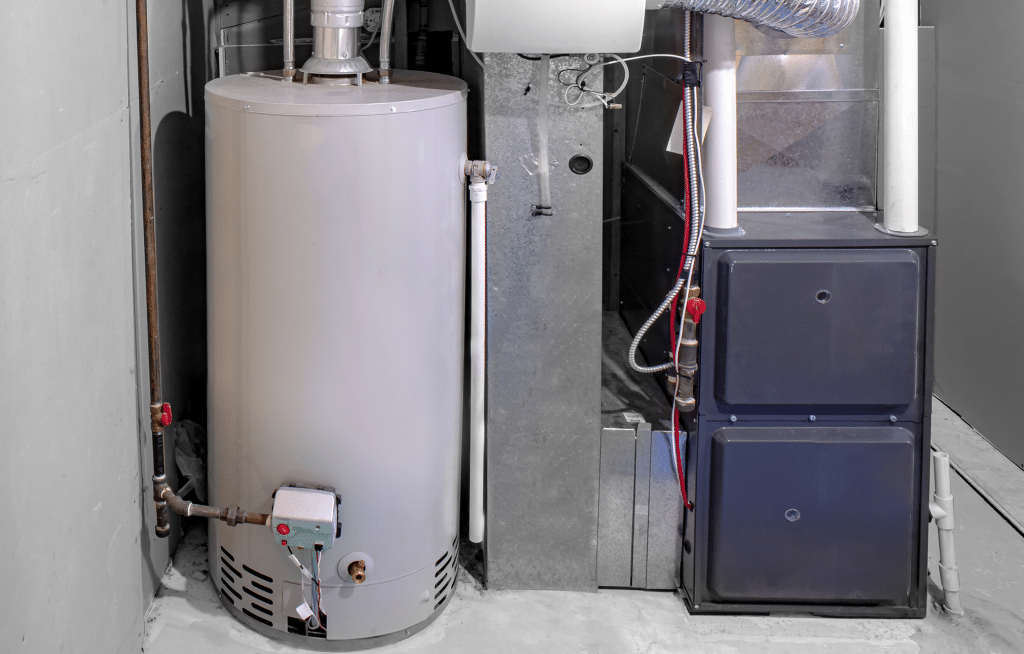As we revel in the comfort of hot water during the chilly seasons and appreciate its utility in everyday tasks like washing dishes and taking showers, we rarely contemplate the mechanics behind water heating. Have you ever wondered how your water heater functions and whether it is intertwined with your furnace? In this article, we delve into the interconnection between water heaters and furnaces, explore how water heaters work, their influence on home heating, and the associated costs.
How Water Heaters Work
In most households, traditional water heaters are the go-to choice for heating water. They operate using two primary methods: direct water heating and indirect water heating.
Direct Water Heating
Direct water heating involves a straightforward process where water is heated within a tank and stored at a preset temperature until you open a hot water faucet. These water heaters can utilize various energy sources, including electricity, gas, oil, or propane. Let’s take a closer look at how they operate, distinguishing between electric and gas water heaters.
Electric Water Heater: Cold water enters the tank and is heated by electric elements. As the water warms, it rises to the top of the heater, flowing through a pipe to your home’s taps when hot water is needed, such as during a shower or when using the kitchen sink.
Gas Water Heater: Gas water heaters follow a similar principle but use a gas burner to heat the water. The burner generates hot air, which rises through a chimney within the tank, heating the water as it passes by. The hot water is then directed through the piping system to your faucets.
Indirect Water Heating
Indirect water heaters diverge from their direct counterparts in that the heating mechanism is external to the tank. In these systems, water is heated in a furnace or boiler, and a pipe transports the hot water to a heat exchanger within the water heater or storage tank. This heat exchanger is responsible for heating the water. Boilers and furnaces can employ various energy sources, including electricity, gas, propane, or oil.
The Clearance Between Water Heaters And Furnaces

An essential consideration when housing both a water heater and a furnace is the required clearance around the furnace. Building codes usually mandate a minimum of 30 inches of clear space around the furnace. This spacious clearance ensures accessibility for repair and replacement, and it is also necessary to provide adequate ventilation to supply combustion air.
In some cases, building codes may recommend locating the electrical disconnect switch and gas line shutoff valve in the same room as the furnace. These regulations often favor an electrical disconnect switch as the primary means of shutting off power, as opposed to a cord plugged into an electrical outlet. To maintain safety, it is advisable to keep the area surrounding the furnace free of combustible items and inflammable materials such as gasoline, paint, or thinners.
Can A Water Heater Affect Home Heating?

Water heaters can be used for both heating water and, under specific circumstances, contributing to home heating. However, this functionality is most effective in climates that are not excessively cold and in well-sealed and insulated homes. Achieving this dual heating system necessitates a combination boiler, which is a single unit capable of heating water and providing warmth to your home.
A combination boiler offers flexibility in temperature control. When the thermostat detects a drop in temperature below the set level, it signals the boiler to increase heating. Once the desired temperature is reached, the boiler modulates itself to maintain the heat, conserving energy. Notably, in such a system, the house and water are not heated simultaneously. The system prioritizes either heating the radiators to warm the home or supplying hot water through the taps, depending on your immediate needs.
Does A Water Heater Emit Heat?
To utilize your water heater for both water heating and home heating, a combination water heater is essential. This integration provides several advantages, including on-demand hot water, space savings, compact size, efficiency improvements, and cost-effectiveness compared to traditional water heating systems.
Installation And Replacement Costs

The costs associated with installing or replacing a water heater and furnace vary depending on factors like the type of installation, energy source, and specific requirements. Here is a breakdown of typical costs:
- Gas Water Heater Installation: Ranges from $250 to $700, with an hourly labor cost of approximately $80.
- Electric Water Heater Installation: Typically costs between $1,100 and $2,100.
- Switching from Electric to LPG (Propane) Water Heaters: May range from $1,200 to $3,000.
- Furnace Replacement: Generally falls between $2,000 and $7,000, although extreme cases can exceed $40,000.
To provide a more comprehensive understanding of furnace replacement costs, consider these estimates:
- Replacing a Gas Furnace: Typically costs between $3,800 and $10,000.
- Replacing an Electric Furnace: Estimated to be between $2,000 and $7,000.
- Replacement Costs for an Oil Furnace: Range from $6,750 to $10,000.
Given the considerable variance in prices, it is advisable to obtain multiple quotes from reputable contractors to ensure a balance between affordability and quality.
Conclusion
Traditional water heaters, operating either directly or indirectly, are prevalent in many homes. The advent of combination boilers, capable of both water and home heating, signifies an evolution in heating systems. When considering the installation or replacement of a water heater and furnace, the associated costs can vary widely. Seek multiple quotations from professionals to strike a balance between affordability and quality, ensuring that your choice aligns with your budget and needs.






GIPHY App Key not set. Please check settings